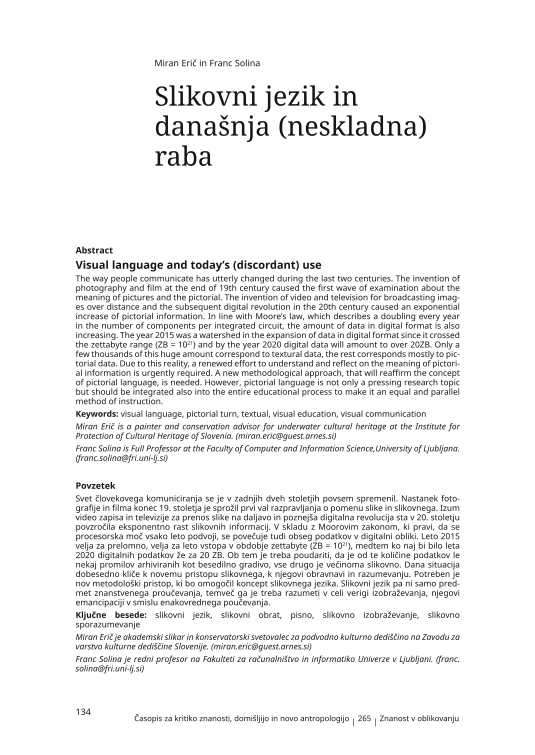The way people communicate has utterly changed during the last two centuries. The invention of photography and film at the end of 19th century caused the first wave of examination about the meaning of pictures and the pictorial. The invention of video and television for broadcasting images over distance and the subsequent digital revolution in the 20th century caused an exponential increase of pictorial information. In line with Moore’s law, which describes a doubling every year in the number of components per integrated circuit, the amount of data in digital format is also increasing. The year 2015 was a watershed in the expansion of data in digital format since it crossed the zettabyte range (ZB = 1021) and by the year 2020 digital data will amount to over 20ZB. Only a few thousands of this huge amount correspond to textural data, the rest corresponds mostly to pictorial data. Due to this reality, a renewed effort to understand and reflect on the meaning of pictorial information is urgently required. A new methodological approach, that will reaffirm the concept of pictorial language, is needed. However, pictorial language is not only a pressing research topic but should be integrated also into the entire educational process to make it an equal and parallel method of instruction.




